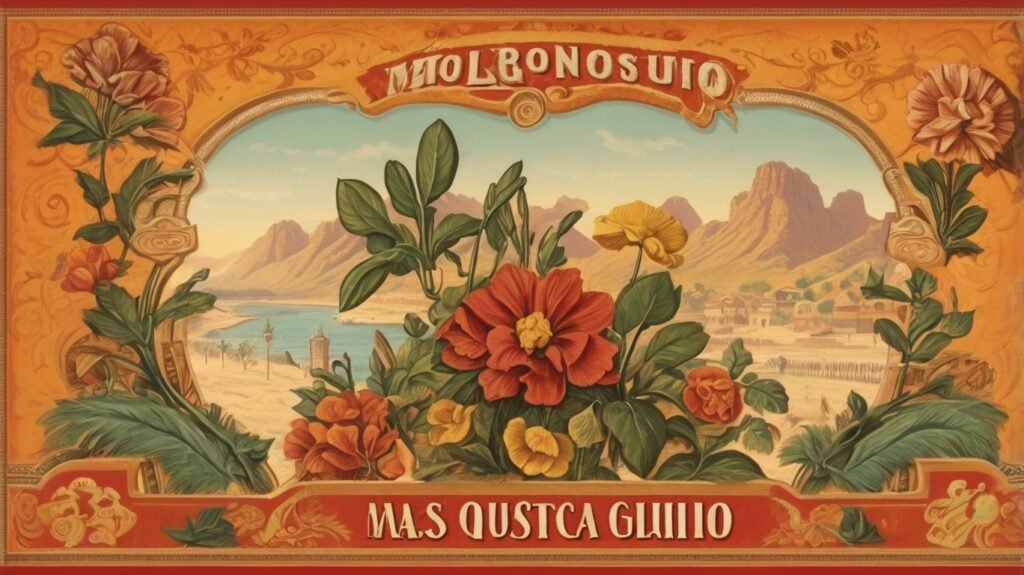When you hear “Mucho Gusto Meaning” in a Spanish conversation, you’re witnessing more than just a simple greeting. You’re experiencing a cultural bridge that has connected millions of people across 21 Spanish-speaking countries for centuries. This comprehensive guide explores the deeper meaning behind “mucho gusto,” its regional variations, and how mastering this phrase can transform your cross-cultural communications.
Understanding the true essence of “mucho gusto” goes far beyond memorizing its English translation. It’s about grasping the cultural nuances that make Spanish-speaking communities some of the most relationship-focused societies in the world. Whether you’re preparing for international business dealings, planning to travel through Latin America, or simply want to connect more authentically with Spanish-speaking colleagues, this guide provides the cultural intelligence you need.

Decoding “Mucho Gusto”: Beyond the Basic Translation
The Literal vs. Practical Meaning
The phrase “mucho gusto” literally breaks down into two components: “mucho” meaning “much” or “a lot,” and “gusto” which translates to “pleasure” or “taste.” However, this word-for-word translation of “much pleasure” fails to capture the warmth and genuine connection that native speakers express when using this greeting.
In practical usage, “mucho gusto” serves as the Spanish equivalent of “nice to meet you” or “pleased to meet you.” But here’s where it gets interesting: the emotional undertone carries significantly more weight than its English counterparts. When a Spanish speaker says “mucho gusto,” they’re not just acknowledging your presence – they’re expressing genuine pleasure in making your acquaintance.
This distinction matters because Spanish-speaking cultures prioritize personal relationships over transactional interactions. The phrase reflects a cultural value system where taking time to properly acknowledge someone demonstrates respect and opens pathways for meaningful connection.
Etymology and Historical Context (Mucho Gusto Meaning)
The word “gusto” originates from the Latin “gustus,” which initially referred to the sense of taste. Over centuries, its meaning evolved to encompass pleasure, enjoyment, and satisfaction. This linguistic evolution mirrors how Spanish culture views social interactions – as experiences to be savored rather than rushed through.
Spanish colonization spread this greeting across vast territories from Mexico to Argentina, but each region adapted it to local customs and social hierarchies. The phrase became a unifying element among diverse Spanish-speaking communities while maintaining flexibility for regional expression.

Regional Variations: How 21 Spanish-Speaking Countries Use “Mucho Gusto”
Unique Applications Across Latin America
Costa Rica stands out for its distinctive dual usage of “mucho gusto.” While the phrase serves its traditional role during introductions, Costa Ricans also employ it as a response to “thank you,” similar to “you’re welcome.” This unique application reflects the country’s emphasis on politeness and social harmony.
In Mexico, the formality level of “mucho gusto” varies significantly based on social class and professional context. Business executives often prefer more elaborate alternatives like “es un honor conocerle” (it’s an honor to meet you) when addressing clients or senior colleagues. Meanwhile, younger Mexicans frequently opt for casual alternatives in social settings.
Argentina presents fascinating pronunciation differences that can identify speakers’ regional origins. Porteños (Buenos Aires residents) tend to emphasize the “u” sound in “mucho” differently than speakers from Córdoba or Mendoza. These subtle variations carry social significance that locals immediately recognize.
Colombian usage integrates “mucho gusto” seamlessly with other greeting customs, such as the traditional cheek kiss or warm handshake. The phrase often accompanies physical gestures that reinforce the pleasure being expressed verbally.
Spain vs. Latin America: The Formality Divide
European Spanish speakers demonstrate marked preferences for alternative expressions, particularly in professional environments. “Encantado” (delighted) dominates Spanish business settings, while “mucho gusto” might sound overly casual or even foreign to some Spaniards.
This preference stems from Spain’s distinct cultural evolution, where centuries of European influence created more formal social protocols. Spanish professionals often view Latin American greeting customs as charming but inappropriately informal for serious business discussions.

The Complete Arsenal: 15+ Alternatives to “Mucho Gusto”
Formal Business Introductions
Professional Spanish introductions require carefully selected phrases that convey appropriate respect and cultural awareness. “Es un honor conocerle” (it’s an honor to meet you) works perfectly when meeting senior executives, government officials, or respected industry leaders.
For executive-level introductions, “tengo el placer de presentarle” (I have the pleasure of introducing you) demonstrates sophisticated language skills while showing proper deference. Investment banking, diplomatic circles, and academic institutions particularly value these elevated expressions.
Industry-specific variations add another layer of cultural competence. Legal professionals often use “es un privilegio conocerle” (it’s a privilege to meet you), while medical professionals might say “me complace conocerle” (it pleases me to meet you).
Casual Social Settings
Younger Spanish speakers increasingly favor “¡qué tal!” (how’s it going!) for informal introductions, especially in social media contexts and casual meetups. This shift reflects generational changes in communication styles while maintaining the underlying warmth that characterizes Spanish greetings.
“Encantado” or “encantada” (delighted) serves as an excellent middle ground between formal and casual. The gender agreement requirement (masculine vs. feminine endings) provides opportunities to demonstrate grammatical competence while expressing genuine pleasure in meeting someone.
“Un placer” (a pleasure) offers versatility across multiple contexts. Its brevity makes it perfect for quick introductions, while its inherent politeness keeps interactions respectful and culturally appropriate.
Digital Age Adaptations
Modern Spanish speakers adapt traditional greetings for video calls and virtual meetings. “Mucho gusto en conocerle virtualmente” (pleased to meet you virtually) acknowledges the digital context while maintaining cultural courtesy.
Social media platforms see creative variations like “mucho gusto por aquí” (pleased to meet you here) on professional networking sites. These adaptations preserve the phrase’s essential meaning while acknowledging the changed interaction medium.
Cultural Intelligence: Reading the Social Context
Body Language and Non-Verbal Cues
Spanish greeting protocols extend far beyond verbal expressions. In most Latin American countries, “mucho gusto” accompanies specific physical gestures that reinforce the pleasure being expressed. Men typically offer firm handshakes while maintaining direct eye contact, while women might exchange cheek kisses depending on regional customs.
Personal space expectations vary dramatically across Spanish-speaking regions. Mexicans generally maintain slightly more distance during introductions compared to Colombians or Venezuelans, who prefer closer proximity as a sign of warmth and acceptance.
Understanding these non-verbal elements prevents cultural misunderstandings that could overshadow perfectly executed verbal greetings. A well-intentioned “mucho gusto” loses impact if accompanied by culturally inappropriate body language.
Age, Gender, and Social Hierarchy Considerations
Spanish-speaking cultures maintain strong respect for age and social position. When meeting elders, adding titles like “Don” or “Doña” before their names shows proper cultural awareness. “Mucho gusto en conocerle, Don Carlos” demonstrates understanding of traditional hierarchy systems.
Gender considerations affect both pronunciation and response selection. Women saying “encantada” instead of “encantado” shows grammatical competence, while understanding when to use formal “usted” versus informal “tú” prevents social awkwardness.
Professional titles integrate naturally with Spanish greetings. “Mucho gusto, Doctor Martinez” or “Un placer conocerla, Licenciada Rodriguez” shows respect for educational achievements and professional status.
Perfect Responses: What to Say When Someone Says “Mucho Gusto”
Immediate Response Options
“Igualmente” (likewise) serves as the most common and culturally appropriate response to “mucho gusto.” Its timing and tone significantly impact the interaction’s success. A quick, warm “igualmente” with a genuine smile creates positive first impressions across all Spanish-speaking cultures.
“El gusto es mío” (the pleasure is mine) elevates the interaction by reflecting the pleasure back to the original speaker. This response works particularly well in professional settings where demonstrating cultural sophistication matters.
Regional preferences influence response selection. Argentines might prefer “mucho gusto también” (pleased to meet you too), while Mexicans often opt for “igualmente, un placer” (likewise, a pleasure).
Advanced Conversation Starters
Moving beyond initial greetings requires smooth transition phrases that maintain conversational flow. “Mucho gusto en conocerle. ¿De dónde es usted?” (pleased to meet you. Where are you from?) opens natural pathways for deeper connection.
Cultural topics that resonate across Spanish-speaking regions include family, food, and regional pride. Asking about local customs or expressing interest in cultural traditions demonstrates genuine respect and curiosity.
Avoiding common conversation killers requires cultural sensitivity. Topics like politics, economic problems, or regional conflicts should be approached carefully, if at all, during initial meetings.
Common Mistakes That Mark You as a Non-Native Speaker
Pronunciation Pitfalls
The silent ‘h’ in “mucho” creates challenges for English speakers who might unconsciously add aspiration. Regional variations compound this difficulty – Mexican Spanish speakers pronounce it differently than Argentines or Spaniards.
Stress patterns significantly impact meaning and perception. Emphasizing the wrong syllable in “gusto” immediately identifies non-native speakers and can distract from the greeting’s intended warmth.
Practice techniques include listening to native speakers from different regions and mimicking their intonation patterns. Audio resources from various Spanish-speaking countries help develop authentic pronunciation skills.
Contextual Errors
Using “mucho gusto” inappropriately marks speakers as culturally unaware. Repeating the phrase multiple times during the same conversation sounds awkward and unnatural to native speakers.
Overusing formal greetings in casual settings creates unnecessary distance. Young people socializing at parties don’t expect or want elaborate formal introductions that feel forced or pretentious.
Missing cultural cues about when to transition from greetings to conversation leaves awkward silences that native speakers would naturally fill with appropriate follow-up comments or questions.
Business Applications: Professional Spanish Introductions
Corporate Meeting Protocols
C-suite introductions require elevated language that demonstrates respect for executive positions. “Es un honor conocerle, señor presidente” (it’s an honor to meet you, Mr. President) shows appropriate deference while maintaining professional dignity.
Client relationship building through proper greetings creates foundations for successful long-term partnerships. Spanish-speaking clients often judge potential partners based on their cultural competence during initial meetings.
International business etiquette across Spanish markets varies significantly. Chilean business culture demands more formality than Colombian or Mexican approaches, requiring adaptable greeting strategies.
Networking and Professional Development
Conference and event introduction strategies should account for the mix of formal and informal interactions typical at professional gatherings. Having multiple greeting options ready prevents awkward moments when unsure about appropriate formality levels.
LinkedIn and professional platforms see adapted versions of traditional greetings. “Mucho gusto en conectar” (pleased to connect) works well for initial contact messages that establish professional relationships.
Building long-term business relationships through cultural awareness pays dividends across Spanish-speaking markets. Professionals who invest time in proper greeting protocols often find doors opening that remain closed to culturally insensitive competitors.
The Psychology of First Impressions in Spanish Culture
Why Greetings Matter More in Hispanic Cultures
Spanish-speaking cultures prioritize relationship-building over task-oriented efficiency, making proper introductions crucial for business success. The concept of “personalismo” means people prefer doing business with individuals they know and trust personally.
This cultural preference creates significant advantages for professionals who master appropriate greeting protocols. Taking time for proper introductions signals respect for cultural values and opens pathways for deeper professional relationships.
Economic research indicates that culturally competent international professionals achieve better outcomes in Spanish-speaking markets. Companies that invest in cultural training for their Spanish-market teams report higher success rates and stronger client relationships.
Building Trust Through Cultural Competence
Proper greetings serve as trust indicators in Spanish-speaking business environments. Clients often interpret cultural sensitivity as evidence of broader professional competence and attention to detail.
Success stories from international professionals consistently highlight the importance of cultural preparation. Executives who learned proper Spanish greeting protocols report smoother negotiations and faster relationship development.
The long-term benefits of cultural investment compound over time. Spanish-speaking partners often become advocates for culturally competent international colleagues, providing referrals and business opportunities.
Future of Spanish Greetings in a Digital World
Evolution of Language in Social Media
Younger generations adapt traditional greetings for digital platforms while preserving essential cultural elements. “Mucho gusto por Instagram” or “un placer conocerte por LinkedIn” acknowledge modern communication channels.
Emoji integration with Spanish greetings creates new expression possibilities. Heart emojis combined with “mucho gusto” messages convey warmth that pure text might lack in digital communications.
Virtual reality and metaverse environments will likely require new greeting protocols that blend traditional Spanish courtesy with technological capabilities. Early adopters are experimenting with avatar-based cultural expressions.
Globalization’s Impact on Spanish Expressions
English influence on Spanish greeting customs appears in code-switching behaviors, particularly among bilingual speakers in the United States. “Nice to meet you” might appear alongside “mucho gusto” in the same conversation.
Preservation efforts for traditional expressions include educational initiatives and cultural organizations promoting authentic Spanish greeting practices. These efforts counter homogenization trends that could diminish regional variations.
Predicted changes over the next decade include increased digital adaptation while maintaining core cultural values. Spanish greetings will likely evolve to accommodate new technologies without losing their essential relationship-building functions.
Practical Application and Mastery
Mastering “mucho gusto” and its variations requires consistent practice across different contexts. Start with basic pronunciation and gradually incorporate cultural nuances that demonstrate deeper understanding of Spanish-speaking societies.
The competitive advantage of cultural fluency extends beyond language skills to encompass relationship-building capabilities that open doors in international markets. Professionals who invest in cultural competence often find themselves preferred partners for Spanish-speaking clients and colleagues.
Your journey to authentic Spanish communication begins with understanding that greetings represent more than social pleasantries – they’re cultural keys that unlock meaningful connections across the Spanish-speaking world. Whether in business meetings, social gatherings, or digital interactions, proper use of “mucho gusto” and its alternatives demonstrates respect for the rich cultural heritage of over 500 million Spanish speakers worldwide.
Remember that cultural learning never ends. Each interaction provides opportunities to deepen your understanding of how Spanish-speaking communities value relationships, respect, and genuine human connection. The phrase “mucho gusto” embodies these values, making it one of the most important expressions you can master in your cross-cultural communication journey.

Noah James is the author behind PrayersLand, a blog dedicated to inspiring faith, hope, and spiritual growth. With a deep passion for prayer and devotion, he shares heartfelt reflections, powerful prayers, and uplifting insights to strengthen believers on their spiritual journey. His writings aim to bring comfort, wisdom, and divine connection.

